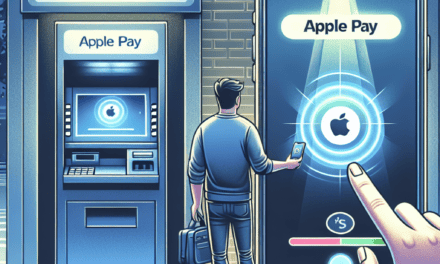“Foreseeing Financial Turbulence: Bill Gates Warns of a 2008-Style Crisis Looming for the U.S.”
Introduction
In recent discussions, Bill Gates, the co-founder of Microsoft and a prominent figure in global philanthropy, has expressed concerns about the potential for an impending financial crisis reminiscent of the 2008 economic downturn in the United States. Gates, known for his keen insights into technological and economic trends, has highlighted several factors that could contribute to such a scenario, including rising debt levels, geopolitical tensions, and the volatility of global markets. His predictions underscore the importance of proactive measures and strategic planning to mitigate the risks of another severe economic disruption. As the world continues to navigate complex financial landscapes, Gates’ warnings serve as a crucial reminder of the vulnerabilities inherent in the global economic system.
Understanding Bill Gates’ Prediction: A 2008-Style Financial Crisis Looming
In recent discussions surrounding the global economy, Bill Gates, the co-founder of Microsoft and a prominent philanthropist, has made headlines with his prediction of an impending financial crisis reminiscent of the 2008 economic downturn. This assertion has sparked widespread interest and concern, prompting analysts and economists to delve deeper into the factors that could potentially lead to such a scenario. To understand Gates’ prediction, it is essential to examine the underlying economic conditions and the potential triggers that could precipitate a crisis of this magnitude.
Firstly, Gates’ prediction is rooted in the observation of certain economic patterns that bear resemblance to those preceding the 2008 financial crisis. During that period, the collapse of the housing market, coupled with the failure of major financial institutions, led to a global economic meltdown. Today, similar vulnerabilities can be identified, particularly in the form of rising debt levels and speculative investments. The U.S. national debt has reached unprecedented levels, raising concerns about the sustainability of fiscal policies and the potential for a debt crisis. Additionally, the proliferation of high-risk financial products and the increasing complexity of financial markets have created an environment ripe for instability.
Moreover, Gates highlights the role of technological advancements in shaping the current economic landscape. While technology has undoubtedly driven economic growth and innovation, it has also introduced new risks. The rapid pace of technological change has led to disruptions in traditional industries, resulting in job displacement and increased economic inequality. This growing disparity between the wealthy and the economically disadvantaged can exacerbate social tensions and contribute to financial instability. Furthermore, the reliance on digital platforms and the interconnectedness of global markets mean that a crisis in one sector or region can quickly spread, amplifying its impact.
In addition to these factors, Gates points to the potential consequences of geopolitical tensions and climate change as catalysts for a financial crisis. The global political climate is marked by uncertainty, with trade disputes, political instability, and shifting alliances posing significant risks to economic stability. These geopolitical challenges can disrupt supply chains, hinder international trade, and create volatility in financial markets. Simultaneously, the effects of climate change, such as extreme weather events and resource scarcity, can have profound economic implications, affecting industries ranging from agriculture to insurance.
While Gates’ prediction may seem alarming, it serves as a call to action for policymakers, businesses, and individuals to address these vulnerabilities proactively. Strengthening regulatory frameworks, promoting sustainable economic practices, and investing in education and workforce development are crucial steps in mitigating the risks of a financial crisis. Additionally, fostering international cooperation and dialogue can help manage geopolitical tensions and create a more resilient global economy.
In conclusion, Bill Gates’ prediction of an inevitable 2008-style financial crisis for the U.S. underscores the importance of vigilance and preparedness in navigating the complexities of the modern economic landscape. By understanding the potential triggers and addressing the underlying vulnerabilities, stakeholders can work towards building a more stable and sustainable future. As history has shown, economic crises are not entirely avoidable, but their impact can be mitigated through informed decision-making and collective action.
Analyzing Economic Indicators: Is the U.S. Heading Towards Another Financial Meltdown?
In recent discussions surrounding the economic future of the United States, Bill Gates has made headlines with his prediction of an inevitable financial crisis reminiscent of the 2008 meltdown. This assertion has sparked widespread debate among economists, policymakers, and the general public, prompting a closer examination of current economic indicators to assess the validity of such a forecast. As we delve into the intricacies of the U.S. economy, it is crucial to consider the various factors that could potentially lead to another financial downturn.
To begin with, one must acknowledge the current state of the global economy, which is characterized by a complex interplay of geopolitical tensions, fluctuating commodity prices, and the lingering effects of the COVID-19 pandemic. These elements have collectively contributed to an environment of economic uncertainty, which is further exacerbated by rising inflation rates. Inflation, a key economic indicator, has been on an upward trajectory, driven by supply chain disruptions and increased consumer demand. This persistent inflationary pressure has led to concerns about the Federal Reserve’s monetary policy and its ability to maintain economic stability.
Moreover, the housing market, a critical component of the U.S. economy, is exhibiting signs of volatility. While housing prices have surged in recent years, driven by low interest rates and high demand, there are growing fears of a potential bubble. The parallels to the pre-2008 housing market are evident, as speculative buying and over-leveraging become increasingly prevalent. Should this trend continue unchecked, the risk of a market correction looms large, potentially triggering a broader financial crisis.
In addition to these domestic factors, the global economic landscape presents its own set of challenges. The interconnectedness of global markets means that economic disturbances in one region can have far-reaching implications. For instance, the ongoing trade tensions between major economies, such as the United States and China, have the potential to disrupt global supply chains and impact economic growth. Furthermore, the energy crisis in Europe, exacerbated by geopolitical conflicts, could lead to increased energy prices worldwide, further straining the U.S. economy.
Another critical aspect to consider is the state of corporate debt. Over the past decade, corporate borrowing has reached unprecedented levels, fueled by low interest rates and a favorable lending environment. However, as interest rates begin to rise in response to inflationary pressures, the cost of servicing this debt will increase, potentially leading to a wave of corporate defaults. This scenario could have a cascading effect on the financial system, reminiscent of the credit crunch experienced during the 2008 crisis.
While these indicators suggest potential vulnerabilities within the U.S. economy, it is important to recognize the measures being implemented to mitigate these risks. Regulatory reforms enacted in the aftermath of the 2008 crisis have strengthened the resilience of financial institutions, reducing the likelihood of systemic failures. Additionally, the Federal Reserve’s commitment to monitoring economic conditions and adjusting monetary policy accordingly provides a level of reassurance.
In conclusion, while Bill Gates’ prediction of an inevitable financial crisis may seem alarming, it serves as a reminder of the importance of vigilance and proactive measures in safeguarding economic stability. By closely analyzing economic indicators and addressing potential vulnerabilities, policymakers can work towards preventing a repeat of the 2008 financial meltdown. As the U.S. navigates this complex economic landscape, a balanced approach that considers both domestic and global factors will be essential in ensuring long-term prosperity.
Lessons from 2008: How Prepared is the U.S. for a Potential Financial Crisis?
In recent discussions, Bill Gates has expressed concerns about the potential for a financial crisis reminiscent of the 2008 economic downturn. His insights prompt a critical examination of the lessons learned from the past and the current preparedness of the United States to handle such an eventuality. The 2008 financial crisis, triggered by the collapse of the housing market and the subsequent failure of major financial institutions, exposed significant vulnerabilities in the global financial system. It led to widespread economic turmoil, resulting in millions of job losses and a prolonged recession. In the aftermath, regulatory reforms were implemented to prevent a recurrence, including the Dodd-Frank Wall Street Reform and Consumer Protection Act, which aimed to increase transparency and reduce risks in the financial sector.
However, despite these measures, Gates’ prediction raises questions about the resilience of the U.S. economy in the face of potential financial instability. One of the key lessons from 2008 is the importance of robust regulatory frameworks to oversee financial institutions and markets. While reforms have strengthened oversight, there is ongoing debate about whether these measures are sufficient to prevent another crisis. Critics argue that some regulations have been rolled back in recent years, potentially increasing systemic risks. Moreover, the complexity and interconnectedness of global financial markets mean that vulnerabilities can quickly spread across borders, making it challenging to contain a crisis once it begins.
Another critical aspect of preparedness is the health of the banking sector. In 2008, many banks were over-leveraged and undercapitalized, leading to a cascade of failures. Today, banks are generally better capitalized, with higher liquidity reserves and stress testing to assess their ability to withstand economic shocks. However, the rise of non-bank financial institutions, often referred to as shadow banks, poses new challenges. These entities are less regulated and can engage in risky financial activities, potentially creating vulnerabilities that are not fully understood or monitored.
Furthermore, the role of monetary policy in crisis management cannot be overlooked. During the 2008 crisis, the Federal Reserve implemented unprecedented measures, including lowering interest rates to near zero and engaging in quantitative easing to stabilize the economy. While these tools remain available, the current economic environment presents new challenges. With interest rates already low and inflationary pressures rising, the Federal Reserve’s ability to respond to a new crisis may be constrained. This situation underscores the need for a comprehensive approach that includes fiscal policy measures to support economic stability.
In addition to regulatory and monetary considerations, the resilience of the broader economy is crucial. The 2008 crisis highlighted the importance of a diversified economic base and the need for policies that promote sustainable growth. Today, the U.S. economy faces new challenges, including technological disruptions, geopolitical tensions, and the ongoing impact of the COVID-19 pandemic. These factors add layers of complexity to the task of crisis preparedness.
In conclusion, while significant progress has been made since 2008, the potential for a financial crisis remains a concern. Bill Gates’ prediction serves as a reminder of the need for vigilance and proactive measures to safeguard the economy. By learning from past experiences and adapting to new challenges, the U.S. can enhance its resilience and better prepare for future uncertainties. As policymakers and financial institutions navigate this complex landscape, a balanced approach that prioritizes stability and innovation will be essential in mitigating the risks of a potential crisis.
Bill Gates’ Economic Insights: What Could Trigger a New Financial Crisis?
In recent discussions about the global economy, Bill Gates has shared his insights on the potential for a financial crisis reminiscent of the 2008 downturn. As a prominent figure in the tech industry and a keen observer of economic trends, Gates’ predictions carry significant weight. He suggests that the U.S. economy is not immune to the cyclical nature of financial markets, and several factors could converge to trigger a crisis similar to the one experienced over a decade ago.
One of the primary concerns highlighted by Gates is the increasing levels of debt across various sectors. Both corporate and consumer debt have been rising steadily, creating a precarious situation where any economic shock could lead to widespread defaults. This accumulation of debt is reminiscent of the pre-2008 period, where excessive borrowing and risky financial products contributed to the collapse. Gates warns that without prudent management and regulation, the current debt levels could become unsustainable, leading to a cascade of financial failures.
Moreover, Gates points to the potential for geopolitical tensions to exacerbate economic vulnerabilities. In an interconnected global economy, conflicts or trade disputes can have far-reaching impacts. For instance, ongoing tensions between major economies could disrupt supply chains, increase costs, and reduce consumer confidence. Such disruptions could act as a catalyst for a financial crisis, as businesses and consumers alike struggle to adapt to rapidly changing conditions.
In addition to these factors, Gates emphasizes the role of technological advancements in shaping economic landscapes. While technology has driven significant growth and innovation, it also presents new challenges. The rapid pace of technological change can lead to market volatility, as industries are forced to adapt or face obsolescence. Furthermore, the rise of digital currencies and fintech innovations introduces new complexities into the financial system. These developments, while promising, also carry risks that are not yet fully understood or regulated, potentially contributing to financial instability.
Gates also highlights the importance of addressing income inequality as a means of preventing economic crises. The widening gap between the wealthy and the rest of the population can lead to social unrest and reduced economic mobility. This inequality can weaken consumer spending, which is a critical driver of economic growth. By implementing policies that promote equitable growth and provide opportunities for all, Gates argues that the economy can become more resilient to potential shocks.
While Gates’ predictions may seem daunting, they also serve as a call to action for policymakers, businesses, and individuals. By recognizing the warning signs and taking proactive measures, it is possible to mitigate the risks of a future financial crisis. This includes implementing sound fiscal policies, enhancing regulatory frameworks, and fostering international cooperation to address global challenges.
In conclusion, Bill Gates’ insights into the potential for a 2008-style financial crisis underscore the need for vigilance and preparedness. By understanding the interconnected nature of modern economies and addressing the underlying issues, it is possible to build a more stable and resilient financial system. As history has shown, crises are often inevitable, but their impact can be minimized through foresight and strategic action.
The Role of Technology in Mitigating Financial Crises: Insights from Bill Gates
In a world where financial stability is often taken for granted, the insights of influential figures like Bill Gates can serve as a wake-up call. Recently, Gates has predicted an inevitable financial crisis reminiscent of the 2008 economic downturn, raising concerns about the preparedness of the U.S. economy. However, Gates also emphasizes the potential role of technology in mitigating the impacts of such crises. As we delve into this topic, it is crucial to understand how technological advancements can serve as both a buffer and a catalyst in the face of economic turmoil.
To begin with, the 2008 financial crisis was characterized by a collapse in the housing market, leading to a domino effect that impacted global economies. The crisis exposed significant vulnerabilities in financial systems, prompting a reevaluation of risk management practices. In the years since, technology has evolved at an unprecedented pace, offering new tools and solutions that could potentially prevent or lessen the severity of future financial crises. Gates, with his extensive background in technology and philanthropy, suggests that leveraging these advancements could be key to navigating the complexities of modern financial systems.
One of the primary ways technology can aid in crisis mitigation is through enhanced data analytics. The ability to process vast amounts of data in real-time allows for more accurate risk assessments and early detection of potential financial threats. Machine learning algorithms, for instance, can identify patterns and anomalies that may indicate underlying economic issues. By providing financial institutions with these insights, technology can enable more informed decision-making and proactive measures to avert crises.
Moreover, the rise of blockchain technology presents another avenue for strengthening financial systems. Blockchain’s decentralized nature offers increased transparency and security, reducing the likelihood of fraudulent activities that can destabilize markets. By ensuring the integrity of financial transactions, blockchain can help build trust and confidence among investors and consumers alike. Gates highlights the importance of such technologies in creating a more resilient financial infrastructure that can withstand shocks and recover more swiftly.
In addition to these technological innovations, the digitalization of financial services has also played a significant role in crisis management. The proliferation of online banking and mobile payment platforms has increased accessibility to financial services, particularly for underserved populations. This inclusivity not only fosters economic growth but also provides a safety net for individuals during economic downturns. By empowering people with the tools to manage their finances effectively, technology can mitigate the social impacts of financial crises.
However, it is important to acknowledge that technology alone cannot prevent financial crises. As Gates points out, human factors such as regulatory oversight, ethical considerations, and economic policies play a crucial role in shaping financial landscapes. Therefore, a holistic approach that combines technological innovation with sound governance is essential for building a robust financial system.
In conclusion, while Bill Gates’ prediction of an inevitable financial crisis may be unsettling, it also serves as a reminder of the importance of preparedness. By harnessing the power of technology, we can enhance our ability to anticipate and respond to economic challenges. As we continue to navigate an increasingly complex financial world, the insights of thought leaders like Gates underscore the need for a forward-thinking approach that leverages technology to safeguard our economic future.
Comparing 2008 and Today: Are We on the Brink of Another Economic Downturn?
In recent discussions, Bill Gates has expressed concerns about the potential for an economic downturn reminiscent of the 2008 financial crisis. As we delve into the factors that characterized the 2008 crisis and compare them to today’s economic landscape, it becomes crucial to understand the underlying dynamics that could lead to such a scenario. The 2008 financial crisis was primarily triggered by the collapse of the housing market, fueled by subprime mortgage lending and the subsequent failure of major financial institutions. This led to a severe credit crunch, plummeting stock markets, and a global recession. Today, while the economic environment has evolved, certain parallels can be drawn that warrant attention.
One of the key similarities between 2008 and the present day is the presence of significant debt levels. In 2008, excessive borrowing by consumers and financial institutions created a fragile economic structure. Currently, both public and private debt levels have reached unprecedented heights, raising concerns about the sustainability of such financial practices. Moreover, the global economy is still grappling with the aftereffects of the COVID-19 pandemic, which has exacerbated fiscal deficits and increased reliance on borrowing. This situation is further complicated by rising interest rates, which could potentially lead to higher debt servicing costs and increased financial strain on both individuals and governments.
Another factor to consider is the state of the housing market. In 2008, the housing bubble burst due to risky lending practices and speculative investments. Today, while lending standards have improved, the housing market is experiencing significant price inflation, driven by low interest rates and high demand. This has led to concerns about affordability and the potential for a market correction. If housing prices were to decline sharply, it could have a ripple effect on the broader economy, similar to what was observed in 2008.
Furthermore, the interconnectedness of global financial markets means that economic instability in one region can quickly spread to others. In 2008, the collapse of Lehman Brothers and other financial institutions had far-reaching consequences, affecting economies worldwide. Today, geopolitical tensions, trade disputes, and supply chain disruptions add layers of complexity to the global economic landscape. Any significant economic shock could trigger a chain reaction, impacting markets and economies across the globe.
However, it is important to note that there are also significant differences between 2008 and today. Regulatory reforms implemented after the 2008 crisis have strengthened the resilience of financial institutions, with higher capital requirements and stress testing measures in place. Additionally, central banks and governments have demonstrated a willingness to intervene swiftly to stabilize markets, as seen during the COVID-19 pandemic. These measures provide a buffer against potential economic shocks, although they are not foolproof.
In conclusion, while there are similarities between the current economic environment and the conditions leading up to the 2008 financial crisis, there are also notable differences that could mitigate the risk of a similar downturn. Nevertheless, the concerns raised by Bill Gates highlight the importance of vigilance and proactive measures to address potential vulnerabilities in the financial system. As we navigate these uncertain times, it is crucial for policymakers, financial institutions, and individuals to remain aware of the risks and take steps to ensure economic stability and resilience.
Preparing for Economic Uncertainty: Strategies Inspired by Bill Gates’ Predictions
In recent discussions about the global economy, Bill Gates has made headlines with his prediction of an inevitable financial crisis reminiscent of the 2008 economic downturn. As one of the most influential figures in the tech industry and a keen observer of global trends, Gates’ insights carry significant weight. His forecast serves as a stark reminder of the cyclical nature of economies and the importance of preparedness in the face of potential financial upheaval. While the exact timing and triggers of such a crisis remain uncertain, individuals and businesses can take proactive steps to mitigate risks and navigate the challenges that may arise.
To begin with, diversification emerges as a fundamental strategy in preparing for economic uncertainty. By spreading investments across various asset classes, sectors, and geographic regions, individuals can reduce their exposure to market volatility. This approach not only helps in safeguarding wealth but also provides opportunities for growth even during turbulent times. For instance, incorporating a mix of stocks, bonds, real estate, and alternative investments can create a balanced portfolio that is more resilient to economic shocks. Moreover, businesses can benefit from diversifying their revenue streams, thereby reducing dependence on a single market or product line.
In addition to diversification, maintaining a robust emergency fund is crucial. An emergency fund acts as a financial safety net, providing liquidity during periods of economic instability. For individuals, this means setting aside three to six months’ worth of living expenses in a readily accessible account. For businesses, it involves ensuring sufficient cash reserves to cover operational costs and unforeseen expenses. This financial cushion not only offers peace of mind but also enables individuals and companies to seize opportunities that may arise during a downturn, such as acquiring undervalued assets or investing in innovation.
Furthermore, prudent debt management is essential in preparing for a potential financial crisis. High levels of debt can exacerbate financial stress during economic downturns, making it imperative to assess and manage liabilities effectively. Individuals should focus on reducing high-interest debt and avoiding unnecessary borrowing, while businesses should strive to optimize their capital structure and maintain healthy debt-to-equity ratios. By doing so, both individuals and companies can enhance their financial resilience and flexibility, allowing them to weather economic storms more effectively.
In light of Gates’ predictions, fostering a culture of continuous learning and adaptability is also vital. The rapidly changing economic landscape demands that individuals and businesses remain agile and open to new opportunities. This involves staying informed about market trends, technological advancements, and emerging industries. By embracing lifelong learning and upskilling, individuals can enhance their employability and remain competitive in the job market. Similarly, businesses that prioritize innovation and adaptability are better positioned to pivot and thrive in the face of economic challenges.
Finally, collaboration and community support play a significant role in navigating economic uncertainty. By building strong networks and fostering relationships with peers, mentors, and industry experts, individuals and businesses can gain valuable insights and support during challenging times. Engaging in collaborative efforts, such as partnerships and alliances, can also create synergies and open new avenues for growth.
In conclusion, while the prospect of a 2008-style financial crisis may be daunting, it also presents an opportunity for individuals and businesses to reassess their financial strategies and fortify their positions. By embracing diversification, maintaining emergency funds, managing debt prudently, fostering adaptability, and leveraging collaboration, they can better prepare for the uncertainties that lie ahead. As Bill Gates’ predictions remind us, proactive preparation is key to navigating the complexities of the global economy and emerging stronger on the other side.
Q&A
1. **What did Bill Gates predict regarding a financial crisis?**
Bill Gates predicted an inevitable financial crisis similar to the 2008 financial crisis for the U.S.
2. **When did Bill Gates make this prediction?**
The specific date of the prediction is not provided, but it is a recent statement.
3. **What was the 2008 financial crisis?**
The 2008 financial crisis was a global economic downturn triggered by the collapse of the housing market and financial institutions in the U.S., leading to widespread economic instability.
4. **Why does Bill Gates believe a similar crisis is inevitable?**
Gates likely bases his prediction on economic patterns, market volatility, and systemic financial vulnerabilities, though specific reasons were not detailed.
5. **What impact did the 2008 crisis have on the U.S. economy?**
The 2008 crisis led to a severe recession, high unemployment rates, significant declines in consumer wealth, and the failure of major financial institutions.
6. **What measures were taken to address the 2008 crisis?**
The U.S. government implemented measures such as the Troubled Asset Relief Program (TARP), monetary policy adjustments, and fiscal stimulus packages to stabilize the economy.
7. **What can be done to prevent a future financial crisis?**
Preventative measures could include stricter financial regulations, improved risk management practices, increased transparency in financial markets, and proactive economic policies.
Conclusion
Bill Gates’ prediction of an inevitable 2008-style financial crisis for the U.S. underscores concerns about economic vulnerabilities and systemic risks that could lead to significant financial instability. His perspective likely draws attention to factors such as high levels of debt, market volatility, and potential regulatory shortcomings that could contribute to such a crisis. Gates’ warning serves as a reminder of the importance of proactive measures, including robust financial regulation, prudent fiscal policies, and economic diversification, to mitigate the impact of potential economic downturns and enhance the resilience of the financial system.





